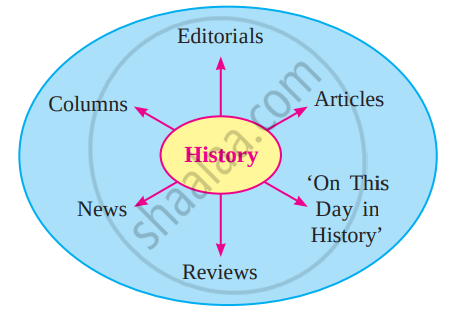Topics
Historiography : Development in the West
History : Applied History
Working of the Constitution
Historiography : Indian Tradition
The Electoral Process
Political Science : Working of the Indian Constitution
Applied History
Political Parties
History of Indian Arts
- What is ‘Art’?
- Indian Traditions of Visual Arts (Drik Kala): Painting
- Prehistoric Paintings
- Mural Paintings and Cave Painting
- Folk Styles of Paintings
- Classical Styles of Painting
- Miniature Paintings in Manuscripts
- Modern Indian Paintings
- Indian Traditions of Visual Arts (Drik Kala): Sculpture Art
- Indus Civilization Sculpture
- Folk Styles of Sculptural Art
- Classical Styles of Sculptural Art
- Indian Iconography
- Indian Traditions of Visual Arts (Drik Kala): Architecture and Sculpture
- Rock-cut Architecture
- Temple Architecture
- Indo-Islamic Architecture
- Indo-Gothic architecture
- Indian Traditions of Performing Arts
- Indian Theatre
- Indian Music
- Indian Dance
- Present Scenario of the Performing Arts
- Art, Applied Art, and Professional Opportunities
Social and Political Movements
- Movement
- Important Movements in India
- Tribal Movement
- Farmers Movement
- Worker's Movements
- Women’s Movement
- Environment Movements
- Consumer Movement
Mass Media and History
Challenges Faced by Indian Democracy
Entertainment and History
Sports and History
Tourism and History
Heritage Management
History - Imperialism
History - 20th Century Age of conflict
History - Emancipation of Asia and Africa
History - World after World War 2
Political Science
Geographical discoveries and colonization
- Concept for Geographical Discoveries and Colonization
Africa
- Imperialism - Africa
Asia: India, China, Japan
- Concept for Asia: India, China, Japan
Dictatorships in Europe, Second World War and world
- Concept on Dictatorships in Europe
- Concept for Second World War and World
First world war
- Concept on First World War
The League of Nations
- Concept for the League of Nations
Russian Revolution
- Concept for Russian Revolution
United Nations Organization
- Concept for United Nations Organization
Africa
- Emancipation of Africa
Asia
- Emancipation of Asia
Globalization
- Globalization After World War II
Scientific and Technological Progress
- Scientific and Technological Progress After World War II
Cold war
- Formation of the Cold War
Social Diversity and Democracy
- Social Diversity
- Coccept for Caste/Race and Democracy
- Concept for Language and Democracy
- Cocnept for Religion and Democracy
- Concept for Gender and Democracy
- Concept for Democracy and Diversity
Challenges to Democracy Remedial Measures to the Challenges
- Concept for Challenges to Democracy Remedial Measures to the Challenges
Internal work
Democracy
- Democracy - Meaning, Types and Characteristics
Political Parties and Types
- Political Parties
- Importance of Political Parties
- Major National and Regional Parties in India/ Types of Political Parties
Notes
Mass Media and Professional Opportunities:
 |
1. Newspaper:
-
Newspaper writers, columnists, and editors are required to write articles, columns, and editorials. Newspapers also require reporters to gather news and press technicians. Newspapers require photographers, writers, technicians, computer operators, and administrative personnel. Actors and technicians are needed in electronic media.
2. Radio:
- Office personnel, centre head, interviewer, news editor, studio technicians, manager, and so on are required.
3. Television:
- Artists, like news anchors and presenters, are required to present programmes on television. If the articles, columns, or programmes are historical in nature, a historian is required. Television also requires journalists, news editors, cameramen, art directors, Lightmen, technical directors, interviewers, artists, make-up artists, and so on.
Related QuestionsVIEW ALL [3]
Read the following extract and answer the questions below.
|
Bharat Ek Khoj ‘Bharat Ek Khoj’, a serial telecasted by Doordarshan has a special place in the history of Indian television serials. It was based on ‘Discovery of India’, a book written by Pandit Jawaharlal Nehru. It was directed by Shyam Benegal. This serial presented the history of India from the ancient to the modern period, throwing light on the social, cultural, and political history of respective periods. It effectively portrayed many aspects of Indian history like Harappan Civilisation, Vedic history, interpretation of Ramayana and Mahabharata, Mauryan period, Turk-Afghan invasions, Mughal period, and the contributions of Mughal emperors, Bhakti Movement, Role of Chhatrapati Shivaji Maharaj, movements of social reform and the Indian struggle for independence, etc. Roshan Seth, the actor who played Pandit Nehru’s role in this serial also appeared as a narrator, introducing and explaining various parts of the story by dramatising them, using folklore and informative speeches. The serial was admired in all parts of India because of the comprehensive historical perspective of Pandit Nehru and its equally comprehensive visual presentation. |
- The serial Bharat Ek Khoj was based on which book?
- Who played the role of Pandit Jawaharlal Nehru in the Bharat Ek Khoj serial?
- Why did Bharat Ek Khoj serial was admired in all parts of India?
